|
|
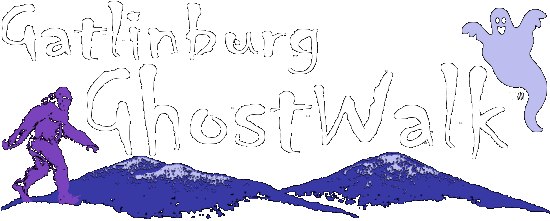

Haunted Frontier, Native American, and Prohibition Era History Will Reach Out to You on This Thrilling Tour!!
| Do the spirits of early pioneers still frequent old frontier trails? What former actress still haunts a popular overnight stay? Learn about the lost, but not forgotten graves of original native people. Which well-known attraction of the town is still | 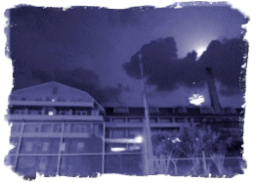 |
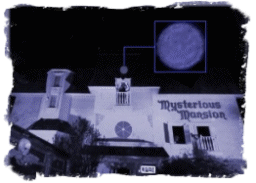 | patronized by the spirits of those who inhabit their most beloved memories? The Haunted Historic Gatlinburg GhostWalk unveils the findings of skilled researchers during professionally conducted scientific |
| investigations on the properties and within the buildings discussed during your tour of Tennessee's most popular tourist destination, rich in Cherokee and early settlement history! All original true stories and real history await you!! | 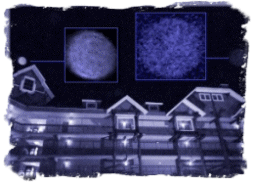 |
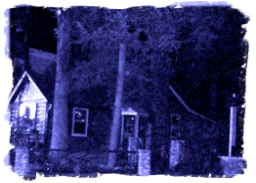 | More than two hundred years ago, in 1803, Martha Jane Huskey Ogle, her children and several other family members arrived in a remote locale of the Smokies of East Tennessee to honor the wish of her recently |
| deceased husband, Billy, who was never able to return to the land he called "paradise". At least not in body. Perhaps, he did in spirit! These and other mysteries await you on this intriguing tour!! Our Gatlinburg Ghost Tour Departs from The Melting Pot, located beside of the former TGI Fridays Restaurant at 959 Parkway in Gatlinburg. | 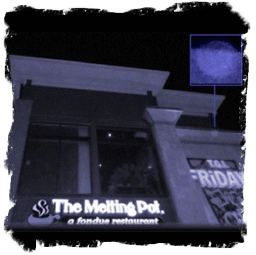 |
The Gatlinburg Ghost Tour Departs From:
The Melting Pot, 959 Parkway, Gatlinburg 37738
| Appalachian GhostWalks' "Haunted Historic Gatlinburg GhostWalk" Lantern-Led Tour operates year-round by request. Advance reservations online with a minimum of two participants in your party are required to reserve as follows... |
March through October  RESERVE NOW RESERVE NOW
Evening Lantern-Led Gatlinburg Ghost Tours Begin at 8:30 PM DST |
November through February  RESERVE NOW RESERVE NOW
Evening Lantern-Led Gatlinburg Ghost Tours Begin at 6 PM EST |
| Tours and dates are booked on a first come first served basis so it's a good idea to reserve your date as soon as possible. Keep in mind that if you book a tour and need to change the date, or even postpone your tour indefintely, you may do so as often as needed without limits, or change fees for up to one year from the date of purchase. By reserving your tour in advance, you're worry free knowing you will have the tour and date of choice for you and your travel companion, family, or tour group. |
|
Here Are a Few Reviews From Past Tour Guests
This was, hands down, the best and most authentic ghost tour my husband have ever done! The tour lasted three hours. They took pictures with us in them, and they actually captured orbs! The stories told were real, and the guide told of his own experiences. This is the best money we spent on our trip to Gatlinburg! We'll be back soon!! - Stephanie Hughes and Family

A Fantastic Experience Worth Every Penny! I took this tour with my family and it was worth every penny. The guide was very informative and knowledgeable about the history and mysteries of the town. I would highly recommend this tour to couples as well as families with children as it is truly wonderful for all ages. From calling to make our reservation on the phone, to the final farewell comments from our guide, the overall experience was tremendously delightful! This company offers several other tours and offerings, such as Bigfoot and we can't wait to come back and indulge ourselves in some of Appalachian GhostWalks' other paranormal tours and vacation packages. - The Wallace Family

Girls week out! My sisters and my daughter went on a girls week out in may and after going to a few shows this caught our eyes now the others have taken a different ghost tour in Gatlinburg a few times in the past but this one called to me. We had everything planned out but it was not to be. The night we had decided to go was booked up so we took a different night and so glad we did. we had Allen all to our selves and had a ball. After looking over all the pictures there were a lot of great orbs and we all decided we have never had since a great experience as this one hand and fingers tingling and smells of things not there but there. Everyone needs to take this tour... there is more out there than us! - Diane B.

I definitely recommend this Gatlinburg Ghost Tour to everyone! They are family friendly, and do a good job on making sure people feel safe! This is the first Ghost tour I've been on that doesn't make it about the fear of spirits, but makes it about the genuine stories of good people that have passed. These tours are equally entertaining and for all ages! Stacey is a wonderful and knowledgeable tour guide, and you will learn so much on his walking lantern tours! - Abigail Jenkins

These are just a few of the many kind words expressed by our past guests. Read hundreds of other testimonials on the Guest Review page of our site. Many thanks to our wonderful past guests who we have toured with for more than twenty years. We appreciate you sending us your gracious feedback. We hope to see you again soon for another simply SPOOK-tacular good time!!! |

A Brief History of This Very Haunted and Historic Town
| HISTORY: For centuries, Cherokee hunters, as well as other Native American hunters before them, used a footpath known as the Indian Gap Trail to access the abundant game in the forests and coves of the Smokies. This trail connected the Great Indian Warpath with Rutherford Indian Trace, following the West Fork of the Little Pigeon River from modern-day Sevierville through modern-day Pigeon Forge, Gatlinburg, and the Sugarlands, crossing the crest of the Smokies along the slopes of Mount Collins, and descending into North Carolina along the banks of the Oconaluftee River. US-441 largely follows this same route today, although it crests at Newfound Gap rather than Indian Gap. |
| Although various 18th-century European and early American hunters and fur trappers probably traversed or camped in the flats where Gatlinburg is now situated, it was Edgefield, South Carolina, native William Ogle (1751–1803) who first decided to permanently settle in the area. With the help of the Cherokee, Ogle cut, hewed, and notched logs in the flats, planning to erect a cabin the following year. He returned home to Edgefield to retrieve his family and grow one final crop for supplies. However, shortly after his arrival in Edgefield, a malaria epidemic swept the low country, and Ogle succumbed to the disease in 1803. |
| His widow, Martha Huskey Ogle (1756–1827), moved the family to Virginia, where she had relatives. Sometime around 1806, Martha Huskey Ogle made the journey over Indian Gap Trail to what is now Gatlinburg with her brother, Peter Huskey, her daughter, Rebecca, and her daughter's husband, James McCarter. William Ogle's notched logs awaited them, and they erected a cabin near the confluence of Baskins Creek and the West Fork of the Little Pigeon shortly after their arrival. The cabin still stands today near the heart of Gatlinburg. James and Rebecca McCarter settled in the Cartertown district of Gatlinburg. |
| White Oak Flats Cemetery: In the decade following the arrival of the Ogles, McCarters, and Huskeys in what came to be known as White Oak Flats, a steady stream of settlers moved into the area. Most were veterans of the American Revolution or War of 1812 who had converted the 50-acre (200,000 m2) tracts they had received for service in war into deeds. Among these early settlers were Timothy Reagan (c. 1750–1830), John Ownby Jr. (1791–1857), and Henry Bohanon (1760–1842). Their descendants still live in the area today. |
| Radford Gatlin and the Civil War: In 1856, a post office was established in the general store of Radford Gatlin (c. 1798–1880), giving the town the name Gatlinburg. Even though the town bore his name, Gatlin, who didn't arrive in the flats until around 1854, constantly bickered with his neighbors. By 1857, a full-blown feud had erupted between the Gatlins and the Ogles, probably over Gatlin's attempts to divert the town's main road. The eve of the U.S. Civil War found Gatlin, who became a Confederate sympathizer, at odds with the residents of the flats, who were mostly pro-Union, and he was forced out in 1859. |
| Despite its anti-slavery sentiments, Gatlinburg, like most Smoky communities, tried to remain neutral during the war. This changed when a company of Confederate Colonel William Holland Thomas' Legion occupied the town to protect the saltpeter mines at Alum Cave, near the Tennessee-North Carolina border. Federal forces marched south from Knoxville and Sevierville to drive out Thomas' men, who had built a small fort on Burg Hill. Lucinda Oakley Ogle, whose grandfather witnessed the ensuing skirmish, later recounted her grandfather's recollections: |
| "...he told me about when he was a sixteen-year-old boy during the Civil War and would hide under a big cliff on Turkey Nest Ridge and watch the Blue Coats ride their horses around the graveyard hill, shooting their cannon toward Burg Hill where the Grey Coats had a fort and would ride their horses around the Burg Hill..." As the Union forces converged on the town, the outnumbered Confederates were forced to retreat across the Smokies to North Carolina. Confederate forces did not return, although sporadic small raids continued until the end of the war. |
| Early 20th Century: In the 1880s, the invention of the bandsaw and the logging railroad led to a boom in the lumber industry. As forests throughout the Southeastern United States were harvested, lumber companies pushed deeper into the mountain areas of the Appalachian highlands. In 1901, Colonel W.B. Townsend established the Little River Lumber Company in Tuckaleechee Cove to the west, and lumber interests began buying up logging rights to vast tracts of forest in the Smokies. |
| Andrew Jackson Huff (1878–1949), originally of Greene County, was a pivotal figure in Gatlinburg at this time. Huff erected a sawmill in Gatlinburg in 1900, and local residents began supplementing their income by providing lodging to loggers and other lumber company officials. Tourists also began to trickle into the area, drawn to the Smokies by the writings of authors such as Mary Noailles Murfree and Horace Kephart, who wrote extensively about the region's natural wonders. |
| In 1912, the Pi Beta Phi women's fraternity established a settlement school (now Arrowmont School of Arts and Crafts) in Gatlinburg after a survey of the region found the town to be most in need of educational facilities in the area. Although skeptical locals were initially worried that the fraternity might be religious propagandists or opportunists, the school's enrollment grew from 33 to 134 in its first year of operation. Along with providing basic education to children in the area, the school's staff created a small market for local crafts. Isolation in the region attracted folklorists such as Cecil Sharp of London to the area in the years following World War I. Sharp's collection of Appalachian ballads was published in 1932. |
| National Park: Extensive logging in the early 1900s led to increased calls by conservationists for federal action, and in 1911, Congress passed the Weeks Act to allow for the purchase of land for national forests. Authors such as Horace Kephart and Knoxville-area businesses began advocating for the creation of a national park in the Smokies that would be similar to Yellowstone or Yosemite in the Western United States. With the purchase of 76,000 acres (310 km2) in the Little River Lumber Company tract in 1926, the movement quickly became a reality. |
| Andrew Huff spearheaded the movement in the Gatlinburg area, and he opened the first hotel in Gatlinburg – the Mountain View Hotel – in 1916. His son, Jack, established LeConte Lodge atop Mount Le Conte in 1926. In spite of resistance from lumberers at Elkmont and difficulties with the Tennessee legislature, Great Smoky Mountains National Park opened in 1934. |
| The park radically changed Gatlinburg. When the Pi Beta Phis arrived in 1912, Gatlinburg was a small hamlet with six houses, a blacksmith shop, a general store, a Baptist church, and a greater community of 600 individuals, most of whom lived in log cabins. In 1934, the first year the park was open, an estimated 40,000 visitors passed through the city. Within a year, this number had increased over twelvefold to 500,000. From 1940 to 1950, the cost per acre of land in Gatlinburg increased from $50 (equivalent to $1,000 in 2024) to $8,000 (equivalent to $105,000 in 2024). |
| While the park's arrival benefited Gatlinburg and made many of the town's residents wealthy, the tourism explosion led to problems with air quality and urban sprawl. Even in modern times, the town's infrastructure is often pushed to the limit on peak vacation days and must consistently adapt to accommodate the growing number of tourists. |
| Fire of 1992: On the night of July 14, 1992, Gatlinburg gained national attention when an entire city block burned to the ground due to faulty wiring in a light fixture. The Ripley's Believe It or Not! museum was consumed by the fire, along with an arcade, haunted house, and souvenir shop. The blaze was stopped before it could consume the adjacent 32-story Gatlinburg Space Needle. Known to locals as "Rebel Corner," the block was completely rebuilt and reopened to visitors in 1995. |
| Few artifacts from the Ripley's Museum were salvaged, and those that survived are marked with that designation in the new museum. The fire prompted new downtown building codes and a new downtown fire station. Ripley's has caught fire twice since it reopened, once in 2000 and again in 2003. Both of those fires, coincidentally, were caused by faulty light fixtures. The 2000 fire caused no damage, and the 2003 fire was contained to the building's exterior, with the museum suffering minimal damage, primarily cosmetic. |
| Fire of 2016: Starting in the Great Smoky Mountains National Park at Chimney Tops in November 2016, a moderately contained wildfire was compounded by very strong winds – with gusts recorded up to 87 miles per hour (140 km/h) – and extremely dry conditions due to drought, causing it to spread down into Gatlinburg, Pigeon Forge, Pittman Center, and other nearby areas. It forced mass evacuations, and Governor Bill Haslam ordered the National Guard to the area. The center of Gatlinburg's tourist district escaped heavy damage, but the surrounding wooded region was called "the apocalypse" by a fire department lieutenant. Approximately 14,000 people were evacuated that evening, more than 2,400 structures were damaged or destroyed, and damages totaled more than $500 million. Fourteen people died in the fires, including local citizens and visiting tourists. |
| Following the fires, the town of Gatlinburg was shut down and considered a crime scene. The city reopened to residents only after a few days but maintained a strict curfew for more than a week, only reopening to the public after the curfew was lifted. In June 2017, the Sevier County district attorney dropped charges against two juveniles accused of starting the fire due to an inability to prove their actions led to the devastation that occurred in Gatlinburg five days later. In May 2018, two Gatlinburg residents filed a $14.8 million lawsuit against the federal government for personal losses suffered in the fire. |
| Registered historic sites: First Methodist Church, Gatlinburg: Designed by Charles I. Barber in Late Gothic Revival style.
Settlement School Community Outreach Historic District: Pi Beta Phi established a settlement school in the area in 1912. This part of the designated historic district includes the Jennie Nicol Health Clinic Building, the Arrowcraft Shop, the Ogle Cabin, Cottage at the Creek, and Craftsman's Fair Grounds and School Playground. The Settlement School Dormitories and Dwellings Historic District consists of Helmick House (Teacher's Cottage), Stuart Dormitory, Ruth Barrett Smith Staff House, Old Wood Studio, a chicken coop, and a stock barn. |
| GEOGRAPHY: Gatlinburg is a city in Sevier County, Tennessee, United States. It is located 39 miles (63 km) southeast of Knoxville and had a population of 3,577 at the 2020 census. It is a popular mountain resort town, as it rests on the border of Great Smoky Mountains National Park along U.S. Route 441. According to the United States Census Bureau, the city has a total area of 10.1 square miles (26 km2), all of which is land. It is surrounded on all sides by high ridges, with the Le Conte and Sugarland Mountain massifs rising to the south, Cove Mountain to the west, Big Ridge to the northeast, and Grapeyard Ridge to the east. The main watershed is the West Fork of the Little Pigeon River, which flows from its source on the slopes of Mount Collins to its junction with the Little Pigeon at Sevierville. |
| U.S. Route 441 is the main traffic artery in Gatlinburg, running through the center of town from north to south. Farther along 441, Pigeon Forge is approximately 6 miles (9.7 km) to the north, and Great Smoky Mountains National Park (viz. the Sugarlands) is approximately 2 miles (3.2 km) to the south. TN-73 (Little River Road) forks off from 441 in the Sugarlands and heads west for roughly 25 miles (40 km), connecting the Gatlinburg area with Townsend and Blount County. U.S. Route 321 enters Gatlinburg from Pigeon Forge and Wears Valley to the north before turning east and connecting the city to Newport and Cosby. |
| Climate: Gatlinburg has a humid subtropical climate (Koppen: Cfa) with hot, humid summers and cool, wet winters. Precipitation is heavy year round, peaking in the months of May–July, with October being the driest month, with only 3.19 inches (81 mm) of average precipitation Snowfall is lower in the valley, averaging about 8 inches (20 cm) of annual snowfall. |


|
|
